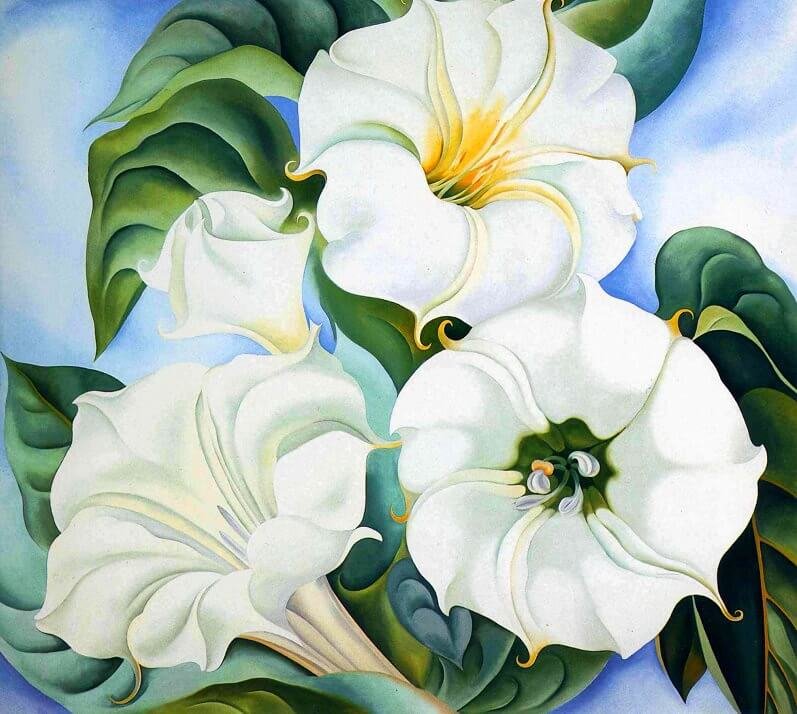Human Nature: Our Enduring Love of Flowers
By Emma Hapner, June 4, 2024
After a long, cold winter, nothing lifts the spirits like seeing the first buds of spring emerge. A season of rebirth, Spring holds symbolic significance for many, representing new beginnings, renewal, and hope. Perhaps this is the reason why many artists choose to immortalize characteristics of spring in their artwork, primarily, flowers.
Flowers have captured the imaginations of artists all over the world for centuries, and play an important role in many aspects of life. Blooms can embody romantic love, friendship, mourning; in fact, nearly every sentiment imaginable can be expressed with flowers. In this post, we will explore some of the most iconic floral paintings throughout history, along with the contemporary artists that are keeping the tradition alive.
Vincent Van Gogh, Sunflowers, 1310
Some of the most well-known paintings of flowers are Van Gogh’s Sunflowers series. Sunflowers held special meaning for Van Gogh; according to him, “they communicated gratitude.” His golden, textural depictions of the flowers also bring to mind other well-known associations of sunflowers with happiness, good fortune, and of course, sunshine. Van Gogh’s post impressionist style lends itself to the depiction of these blooms; the thick brush strokes, or impasto, imbue the piece with a sense of touch that compliments the monochromatic color scheme.
Rachel Ruysch, Flowers in a Vase, 1685
Rachel Ruysch was a Dutch still-life painter from the Northern Netherlands who specialized in flowers. Her lifelike, realistic style led to international fame in her lifetime. Many artists from this period referred to botanical texts when composing their floral paintings, resulting in imagined “bouquets” that combined flowers from different locations and seasons to create an arrangement that could never exist in real life. These highly detailed and accurate depictions of plants and insects also revealed a growing interest in science and biology that was highly innovative at the time.
Cicely Mary Barker, The Poppy Fairy, 1923
Cicely Mary Barker is know for her illustration series, Flower Fairies, which includes botanically accurate drawings in170 original artworks, coupled with the enchanting fairy images based on real children from Cicely’s sister’s nursery school. Each character Barker created is a personification of a flower or plant and explores the many different symbols of each. This illustration was originally accompanied by the following poem:
The green wheat’s a-growing,
The lark sings on high;
In scarlet silk a-glowing,
Here stand I.
The wheat’s turning yellow,
Ripening for sheaves;
I hear the little fellow
Who scares the bird-thieves.
Now the harvest’s ended,
The wheat-field is bare;
But still, red and splendid,
I am there.
Georgia O’Keeffe, Jimson Weed, 1936
Georgia Totto O'Keeffe was an American painter known for her flower paintings whose career spanned seven decades, making her an integral part of the Modern Art movement. She once said, “When you take a flower in your hand and really look at it, it's your world for the moment, I want to give that world to someone else." O’keeffe’s unique use of perspective results in floral arrangements that are distinguished from the average still life, with a focus on form and color more than realism.
Chelsea Hart, Energy Vase, acrylic on canvas
Our fascination with depicting flowers is still present today! Chelsea Hart is a contemporary painter and muralist based in Denver, CO. In her work, Hart explores vibrant, layered florals through bold colors and a child-like sense of playfulness. Hart says in her artist statement, “I’m drawn to the friendly confidence flowers possess in how they spring from the earth just when we crave their presence most. Their pops of color provide us with endless inspiration while adding a lighthearted energy to the landscape. In my creative practice, I view florals as the lively companions amongst their botanical friends. They inspire me to integrate deep internal reflection into my art practice with tenderness.”
Chelsea Hart, Inspired by the Greats, acrylic on canvas, 16 in x 20 in
Hart's work is clearly referencing the tradition of still life painting. However, she infuses each piece with an energy and spontaneity that highlights her individual style. Hart reduces her florals down to their most basic form, and they become symbols for flowers, reminiscent of the naivety of childhood. Her use of simplistic form made up of painterly brushstrokes is elevated by her exuberant color palette, which brings each painting to life. Her works feel uninhibited and genuine and are a joyous celebration of nature.






